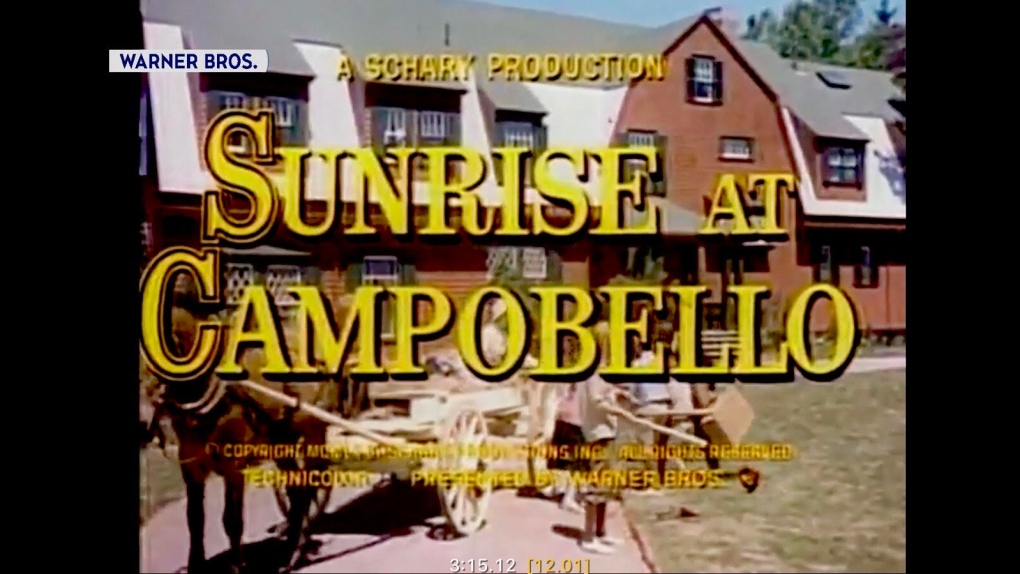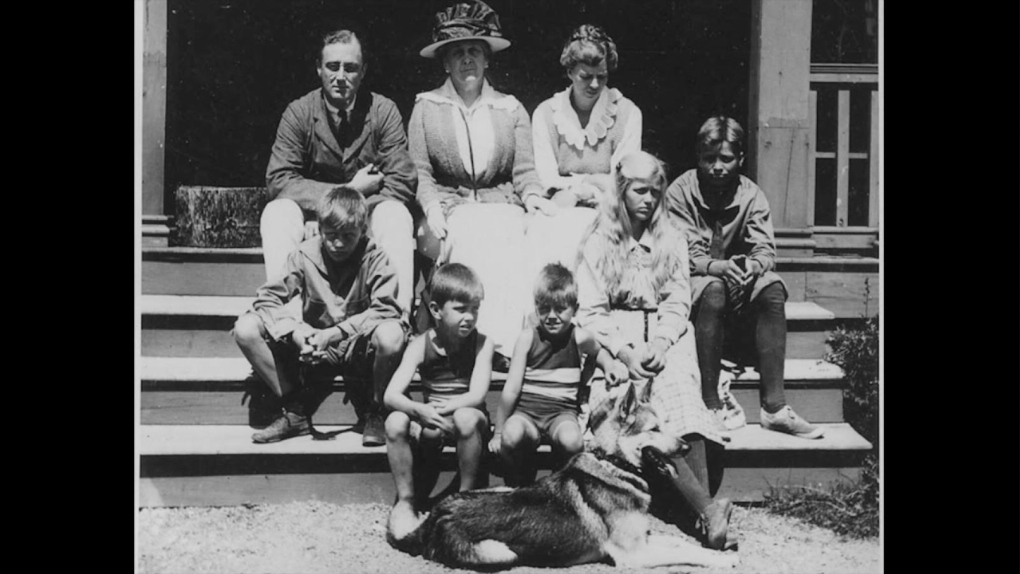Roosevelt family's Canadian retreat marks international park milestone
The Canadian vacation home of an American president, which has long symbolized strong ties between both countries, is marking a milestone this summer.
The seaside forest around Franklin D. Roosevelt’s iconic red cottage was a summer retreat for the 32nd U.S. president and his family on Campobello Island, N.B., during the early part of the last century.
The cottage is the centrepiece of Roosevelt Campobello International Park, marking its 60th year as a designated site with a 10-day commemoration later this month.
“Our goal is to demonstrate to every visitor why the Roosevelt’s loved the island so much, from the historical elements, to the pathways and trails, and the spectacular views around the natural area,” says Bruce Thomson, the park’s visitor services manager, in an interview.
The Roosevelt family’s “beloved island” was also where FDR became seriously ill with polio in August 1921. Roosevelt, at the time a New York City lawyer, was transported off the island about a month later and would experience paralysis from the waist down as a lasting effect of the disease.
 Campobello Island and the Roosevelt Cottage are featured in the 1960 film “Sunrise at Campobello," focusing on the summer of 1921 and FDR's polio illness. (Source: Warner Brothers)
Campobello Island and the Roosevelt Cottage are featured in the 1960 film “Sunrise at Campobello," focusing on the summer of 1921 and FDR's polio illness. (Source: Warner Brothers)
The island and red cottage are featured in the 1960 Academy Award nominated film ‘Sunrise at Campobello,’ focusing on Roosevelt’s sudden illness. A stage play of the same name won the 1958 Tony Award for best play.
Roosevelt would go on to become the longest serving U.S. president, leading through the Great Depression and Second World War. He died in office, shortly after being elected for a fourth time, in 1945.
Eleanor Roosevelt would ultimately elevate the role of first lady, championing humanitarian causes and creating the U.N. Declaration of Human Rights (drafted by New Brunswick born John Peters Humphrey).
True to 1920
The Roosevelt’s 34 room summer home is within a 2,800 acre park featuring other historic cottages, trails, and viewing decks.
Admission to the park is free and includes guided interpretations.
Roger Quirk has worked at the park for 50 of its 60 years, and says the red cottage has remained true to 1920 through all those years.
“About 90 to 95 per cent of what is in the Roosevelt Cottage (belonged to) the Roosevelts’ and we take very good care of it,” says Quirk. “Anything that we handle we use cotton gloves to protect it.”
The international park is owned and managed by the U.S. and Canadian governments.
 The Roosevelt family on Campobello Island in 1920. (Source: Roosevelt Campobello International Park)“It really is a symbol of the relationship between the two countries, as personified by the Roosevelts’,” says Thomson.
The Roosevelt family on Campobello Island in 1920. (Source: Roosevelt Campobello International Park)“It really is a symbol of the relationship between the two countries, as personified by the Roosevelts’,” says Thomson.
The park recorded about 225,000 visitor experiences last summer, mostly from U.S.-based Roosevelt fans.
There's no mention in any Roosevelt exhibits of present-day presidential politics or world events, but some visitors can't help but make a generational link.
"You can see the carry over in many ways from what was going on then to what we have going on in the world today," says Tennessee visitor Mary Jellison.
60th anniversary celebrations
Official ceremonies to mark the park’s 60th anniversary will happen on July 27, and will include speeches, performances, and a picnic.
Special events between July 22 and July 31 include a concert series, as well as presentations about the park’s history and the Passamaquoddy Tidal Project, which Roosevelt harboured interest in during the 1920s and 1930s.
 Franklin Roosevelt delivering a “Fireside Chat” radio broadcast as U.S. president. (Courtesy: Roosevelt Campobello International Park)The park’s dedication in 1964 happened about two years after the death of Eleanor Roosevelt and included a speech from Franklin D. Roosevelt Jr., who was born on Campobello Island.
Franklin Roosevelt delivering a “Fireside Chat” radio broadcast as U.S. president. (Courtesy: Roosevelt Campobello International Park)The park’s dedication in 1964 happened about two years after the death of Eleanor Roosevelt and included a speech from Franklin D. Roosevelt Jr., who was born on Campobello Island.
The 1964 opening also featured the attendance of Lady Bird Johnson and Maryon Pearson.
Reverence for the Roosevelts’ has kept the park on people’s travel itineraries ever since, says Thomson.
“It’s a testament to the legacy of Franklin and Eleanor Roosevelt that their name recognition lives on and that people want to come and experience what they experienced over 100 years ago.”
For more New Brunswick news visit our dedicated provincial page.
CTVNews.ca Top Stories

Quebec man, 81, gets prison sentence after admitting to killing wife with Alzheimer's disease
An 81-year-old Quebec man has been sentenced to prison after admitting to killing his wife with Alzheimer's disease.
Canada Post quarterly loss tops $300M as strike hits second week -- and rivals step in
Canada Post saw hundreds of millions of dollars drain out of its coffers last quarter, due largely to its dwindling share of the parcels market, while an ongoing strike continues to batter its bottom line.
'Immoral depravity': Two men convicted in case of frozen migrant family in Manitoba
A jury has found two men guilty on human smuggling charges in a case where a family from India froze to death in Manitoba while trying to walk across the Canada-U.S. border.
Pat King found guilty of mischief for role in 'Freedom Convoy'
Pat King, one of the most prominent figures of the 2022 'Freedom Convoy' in Ottawa, has been found guilty on five counts including mischief and disobeying a court order.
Trump supporters review-bomb B.C. floral shop by accident
A small business owner from B.C.'s Fraser Valley is speaking out after being review-bombed by confused supporters of U.S. president-elect Donald Trump this week.
Trump chooses Bessent to be Treasury secretary and Vought as top budget official
President-elect Donald Trump announced Friday that he'll nominate hedge fund manager Scott Bessent, an advocate for deficit reduction, to serve as his next treasury secretary. Trump also said he would nominate Russel Vought to lead the Office of Management and Budget.
Nearly 46,000 electric vehicles recalled in Canada over power loss risk
Nearly 46,000 electric vehicles from Kia, Hyundai and Genesis are being recalled in Canada over a potential power loss issue that can increase the risk of a crash.
Canada's tax relief plan: Who gets a cheque?
The Canadian government has unveiled its plans for a sweeping GST/HST pause on select items during the holiday period. The day after the announcement, questions remain on how the whole thing will work.
Grey Cup streaker fined $10K, banned from BC Place
The woman who ran across the field wearing nothing but her shoes at last weekend’s Grey Cup has been given a fine and banned from BC Place.


































